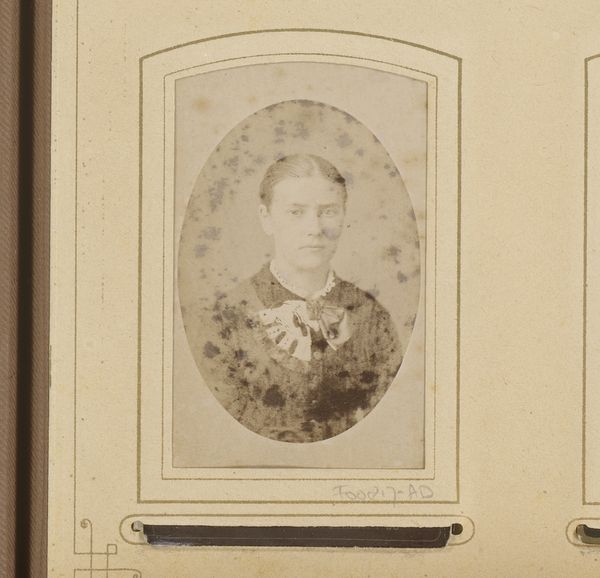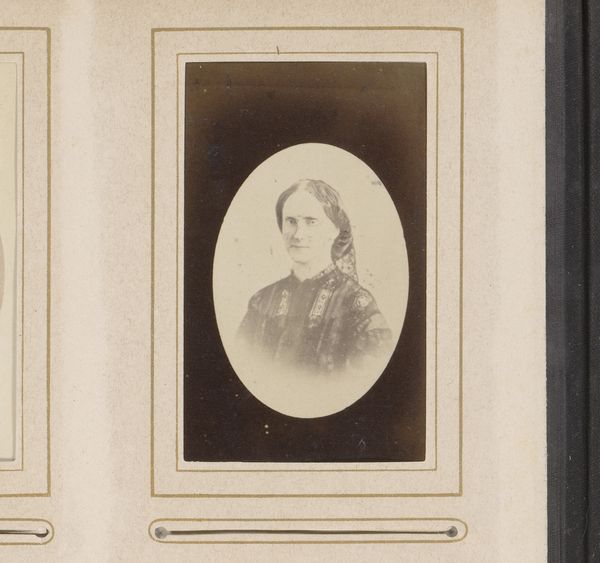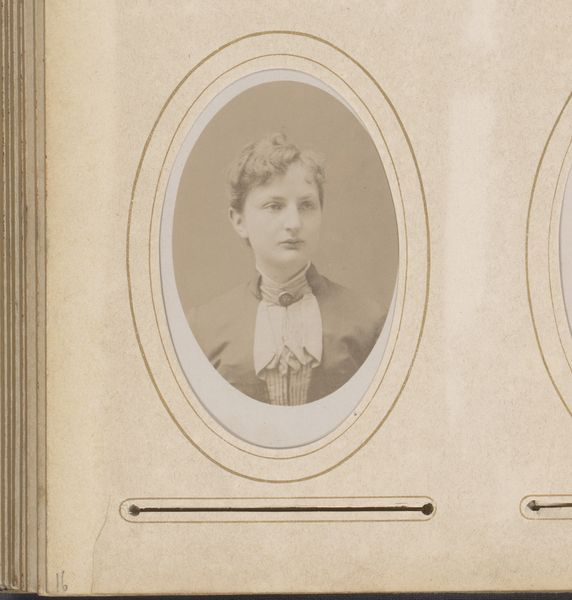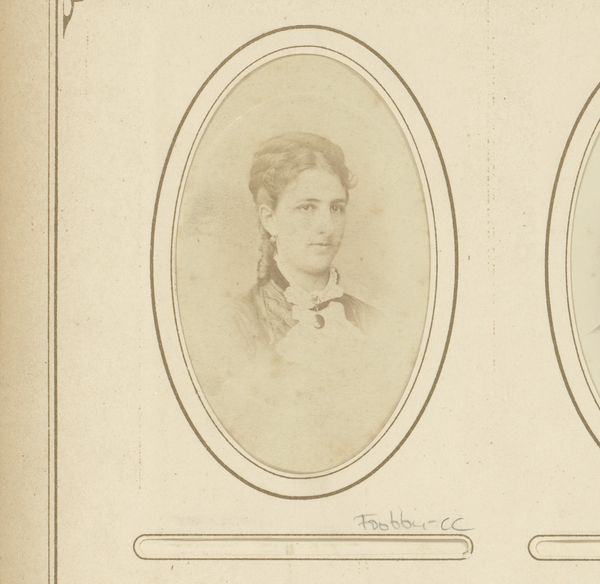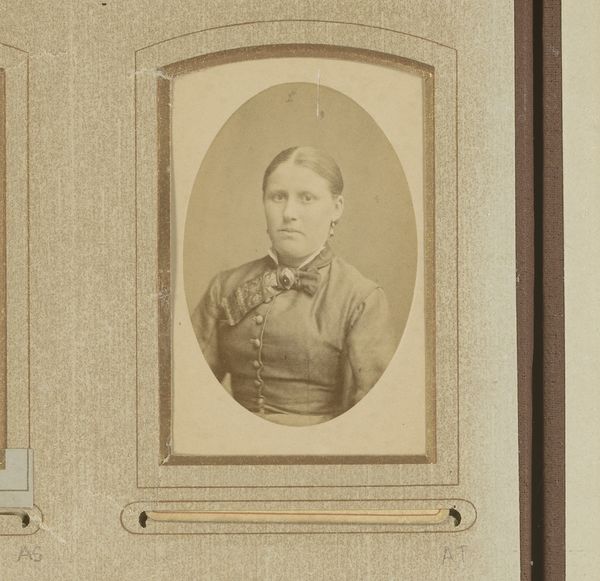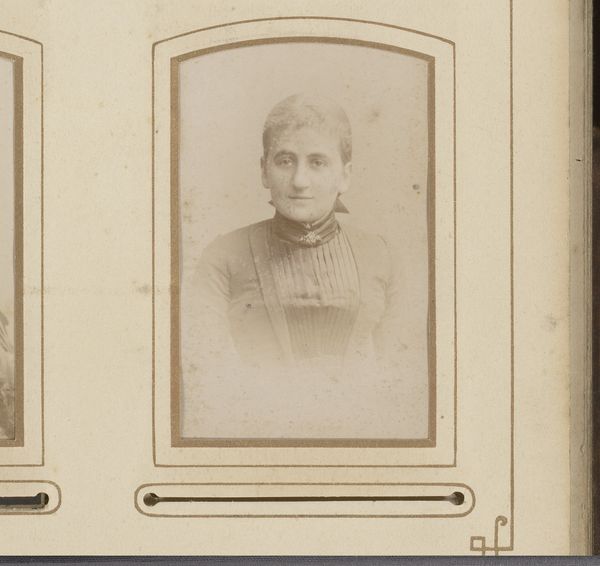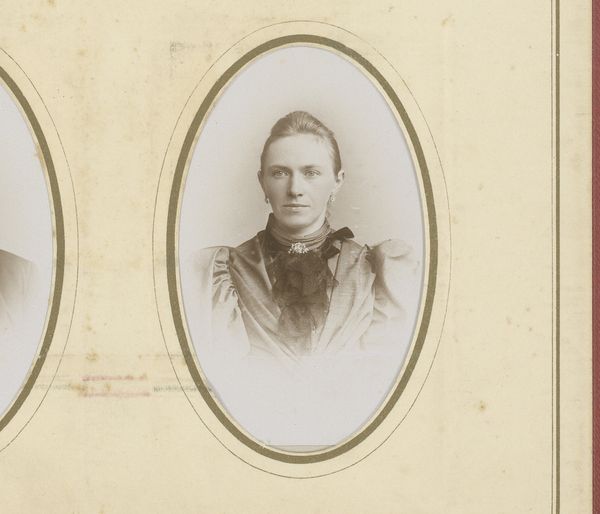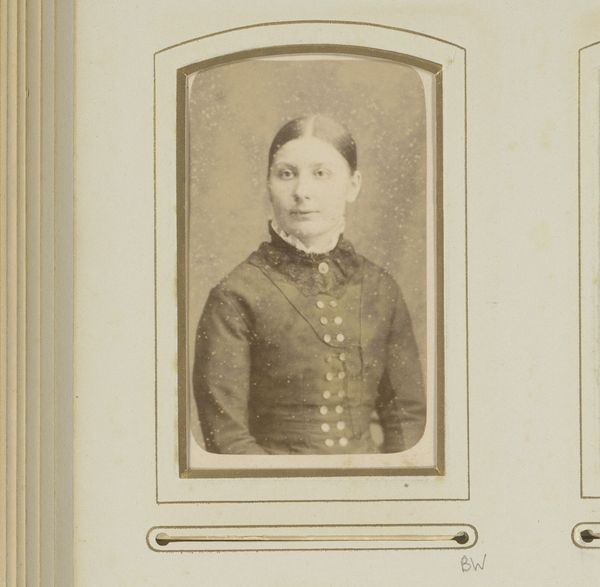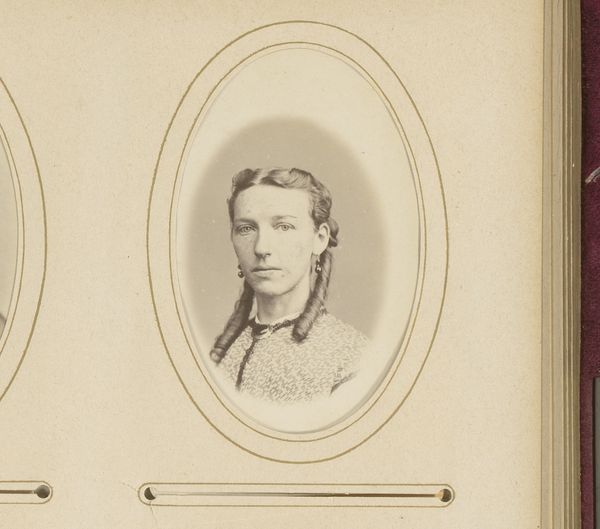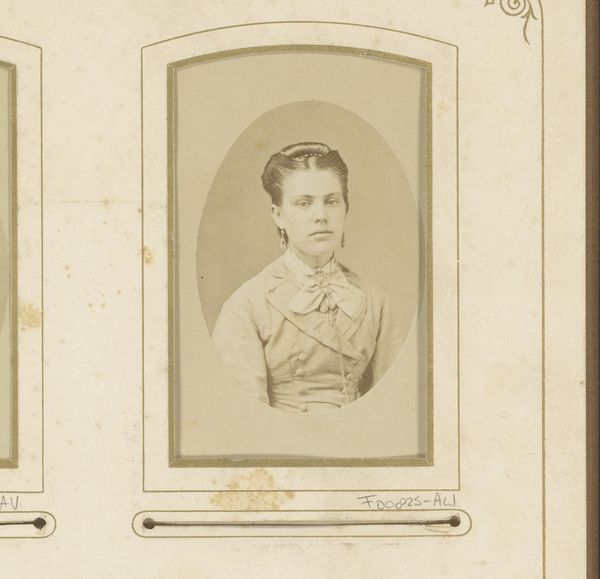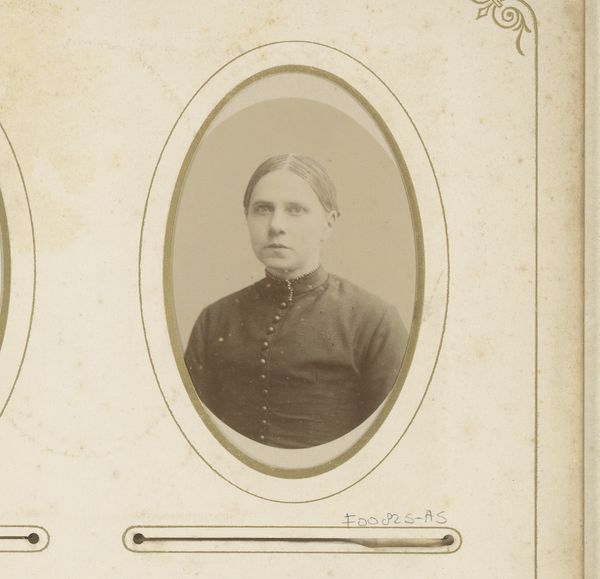
photography, gelatin-silver-print
#
portrait
#
photography
#
historical photography
#
gelatin-silver-print
Dimensions: height 84 mm, width 53 mm
Copyright: Rijks Museum: Open Domain
Editor: This is an albumen silver print titled *Portret van een vrouw met pijpenkrullen,* or *Portrait of a Woman with Curled Bangs*, made sometime between 1875 and 1899, by Photographie Française. The woman's gaze is quite direct, almost confrontational, and there is a formality to her dress. What do you make of this portrait? Curator: What strikes me is the sitter's agency in how she presents herself. While portraiture of this era was largely defined by bourgeois conventions, we can also see subtle assertions of self. Her direct gaze resists the passivity often expected of women in photographic portraiture during the late 19th century. Do you notice how the photograph, while adhering to a certain format, also offers space for individuality through details like her hairstyle and the confident set of her jaw? Editor: Yes, I see what you mean. I hadn't really considered the restrictive social context of the time. So, you’re saying even within those constraints, there’s still room for expression? Curator: Precisely. And it’s important to ask: Who was this woman? What choices did she make about how she wanted to be seen and remembered? Considering gender and class structures of the era, we can explore this image beyond a simple representation and discuss what it says about female identity. The very act of commissioning a portrait suggests a desire to participate in visual culture and perhaps even challenge prevailing norms. Editor: It’s amazing to think that this image can tell us so much more than what's immediately visible. It makes me realize how much I can learn from older portrait photography, understanding that they are not merely historical documents but complex visual statements. Curator: Exactly! By analyzing the power dynamics embedded within these images, we gain insight not only into the past but also into the enduring concerns of identity and representation. It shows us how photographs, even from long ago, can be part of larger discussions about our shared history.
Comments
No comments
Be the first to comment and join the conversation on the ultimate creative platform.

